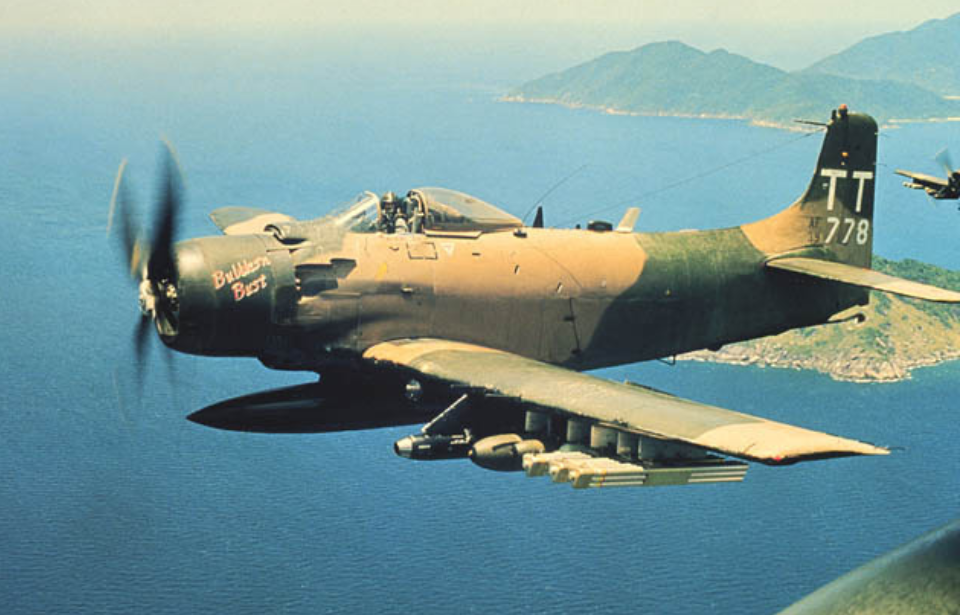The Douglas A-1 Skyraider was not only an integral aircraft used following WWII, but it was also a deadly weapon capable of eviscerating the enemy into nothing more than a grease spot – making it one of the best attack planes of all time.
The A-1 (formerly known as the AD Skyraider) is a single-seat attack aircraft that saw service from 1946 until the 1980s. The piston-engined, American-designed plane’s ability to carry large amounts of weapons over a long period of time made it especially powerful during the Southeast Asia War. It provided close air support to ground forces, escorted helicopters during rescue missions, and attacked enemy supply lines.
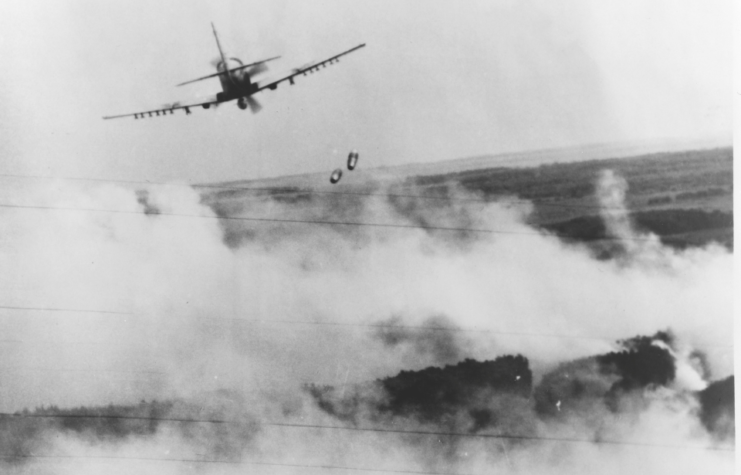
With a maximum speed of 322 miles per hour, a range of 1,316 miles, and an armament complete with an array of bombs, rockets, cannons, and guns the A-1 was extremely successful at navigating guerrilla war tactics in the Korean War. However, it was ultimately phased out in favor of more advanced jet aircraft.
Development of the Skyraider
The Douglas Skyraider was first developed during WWII to meet the needs of the US Navy – which had realized that carrier air wings needed to change due to new weapons advancements. Designed by Ed Heinemann from the Douglas Aircraft Company, the first A-1 prototype, XBT2D-1, was ordered in July 1944.
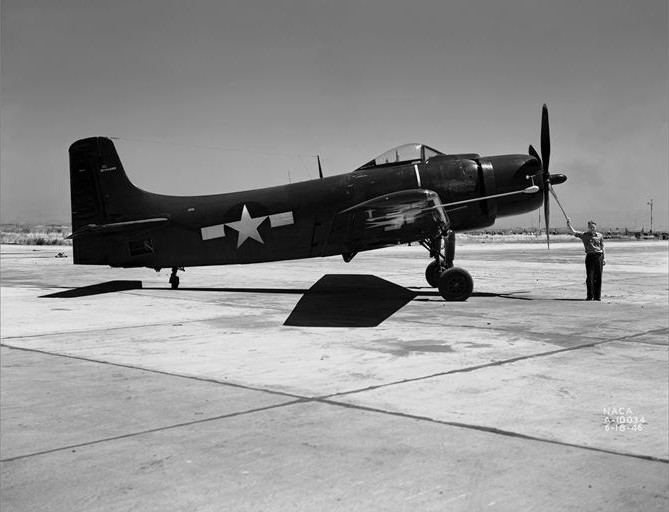
By December 1946, the XBT2D-1 was re-designated the AD-1 and put into production. The Skyraider, also affectionately called “the Spad” after the WWI French biplane, combined the stamina of larger planes with the maneuverability of smaller aircraft.
Equipped with fifteen hardpoints, it could carry a large amount of ordnance over a longer period of time, while still easily maneuverable at low speeds. Unlike faster fighter planes like Vought F4U Corsair, the A-1 was well suited to ground attacks.
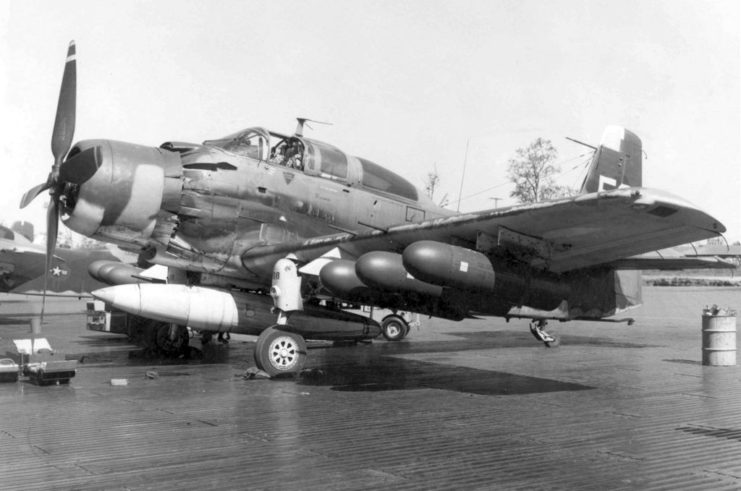
Before production ended in 1957, Douglas manufactured a total of 3,180 Skyraiders in 28 variations for a variety of situations like carrier-based aircraft, attack bombing, reconnaissance, airborne early warnings, and search missions.
The Korean War saw 128 planes lost
The first Skyraiders arrived at the Korean Peninsula in 1950, and by 1955 29 Skyraider squadrons were serving the U.S. Navy in Korea. In 1962, the aircraft was re-designated A-1D/A-1J. The A-1 became a valuable asset to the United States at the start of the Korean War thanks to its impressive weapons load and flying time which surpassed most other jets at the time – a whopping 10 hours of flight at a time.
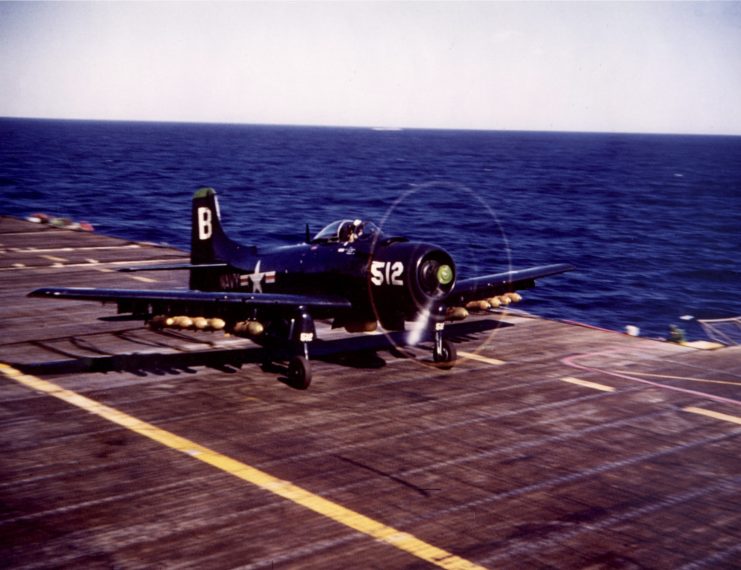
On June 16, 1953, Marine Corps pilots Major George H. Linnemeier and CWO Vernon S. Kramer shot down a Soviet-built Polikarpov Po-2 biplane, making it the only documented Skyraider victory of the Korean War. During the entirety of the war, AD Skyraiders were only flown by U.S. Navy and U.S. Marine Corps pilots.
Unfortunately, there were more losses than victories when it came to the Skyraider’s role in Korea. By the end of the war, 128 AD Skyraider planes were lost – 101 in combat and 27 due to operational issues. The operational issues largely stemmed from the overwhelming power of the aircraft, which were prone to accidents when performing landings on aircraft carriers.
By accidentally using too much throttle, an AD pilot could easily over-rotate the propeller and enter a fatal “torque roll” that plummeted them into the sea.
The Skyraider thrived during the Vietnam War
U.S. Air Force Skyraiders were later assigned to the 1st Air Commando Squadron in Vietnam in 1964. These aircraft were modified from the older versions used in Korea to help support search and rescue missions. Supporting special operations along the Ho Chi Minh Trail, Skyraiders aided ground forces by spraying defoliant or aiding in the extraction of troops from enemy territories.
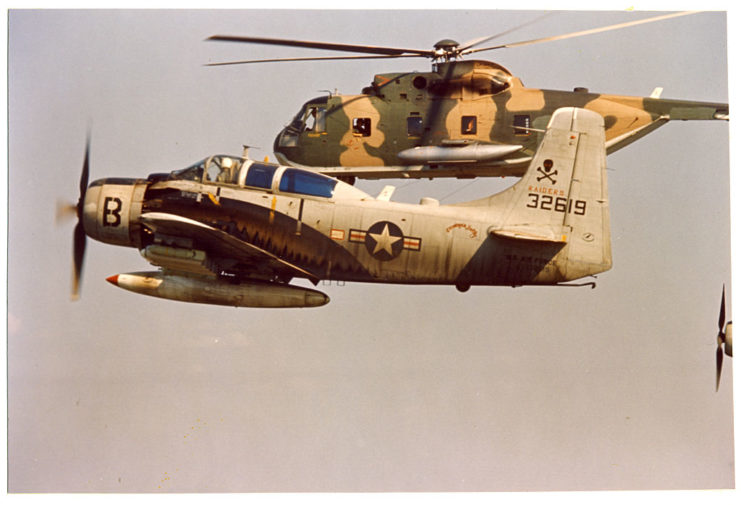
The most famous squadron of Skyraiders, under the call sign “Sandy,” supported search and rescue missions by air. The A-1’s ability to fly low and slow was perfect for locating missing persons over a longer period of time without needing to refuel, unlike other jet planes at the time. The Sandies held back enemy fire while helicopters went in to save downed personnel.
The immense firepower of the Skyraider was also a key asset during the Vietnam War. According to Boeing, the A-1 was the only aircraft of its time capable of delivering 8,000 pounds of bombs with impressive precision over difficult targets like dams and bridges.
By 1960, the United States began to transfer over some of its A-1 Skyraiders to the Republic of Vietnam Air Force (RVNAF). By 1968, the RVNAF had received over 150 Skyraiders. Potential Vietnamese pilots were sent to NAS Corpus Christi in Texas to receive flight training on the Skyraider, which was a primary aircraft used by the Vietnamese throughout the war.
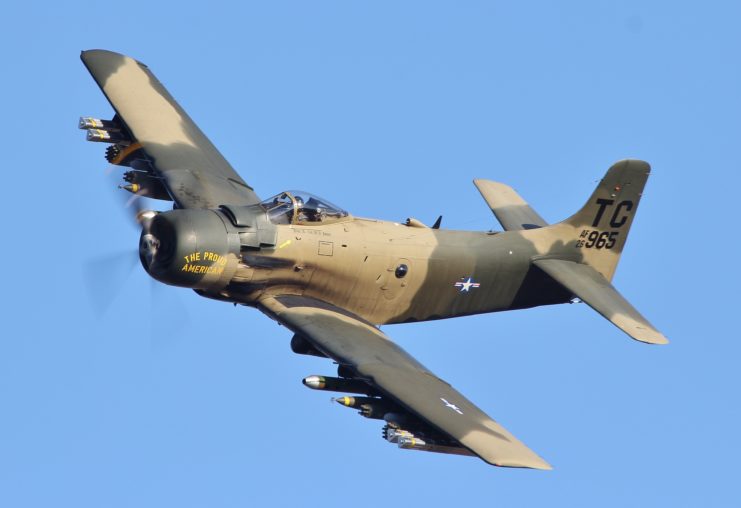
When the United States ended its direct involvement with Vietnam, all remaining Skyraiders were handed over to the RVNAF by 1973. By this point, many RVNAF pilots were better trained to fly the A-1 Skyraider, clocking in thousands of flight hours over the course of the war.
Is the Skyraider still the best?
The United Kingdom, France, and Sweden have also acquired Douglas A-1 Skyraiders. The United Kingdom retired the aircraft in 1962, while it remained in limited French and Swedish service until the 1970s.
Even though the lifespan of the Douglas A-1 Skyraider was relatively short-lived, it is still remembered as one of the best aircraft ever made. Former U.S. Marine Corps Captain William C. Smith told HistoryNet he wasn’t impressed when he first laid eyes on the AD Skyraider. “After flying Corsairs, I thought it looked like a great big airplane with a little bitty engine,” he said.
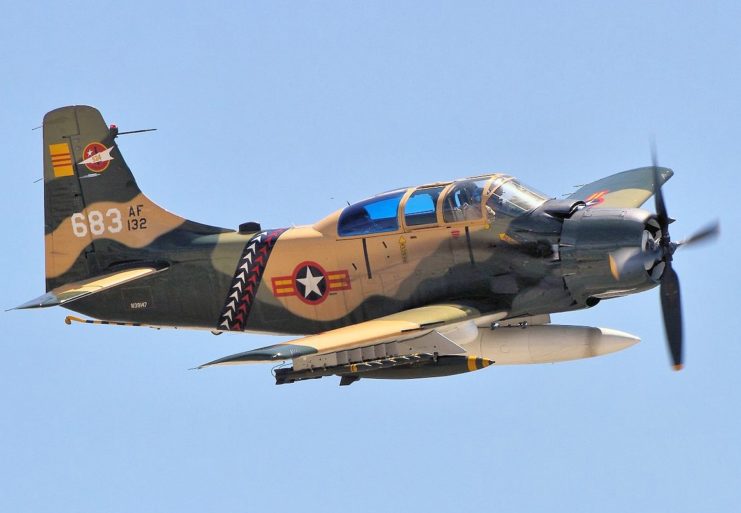
It wasn’t until Smith was given a four-hour introduction to the Skyraider before entering combat in the Korean War that he realized its potential: “My original opinion of the plane did a complete 180,” Smith said.
More from us: Northrop F-89 Scorpions Once Carried Nuclear Weapons to Combat Soviet Bombers
“When you fly combat, you need to have confidence in your airplane, and after that first week there was no question in my mind that our ADs were the best planes in the world for the job expected of us,” he added. “Even after all these years of progress, I believe the AD is still the best airplane ever made for close-in attack option…better, in fact, than anything flying today.”
